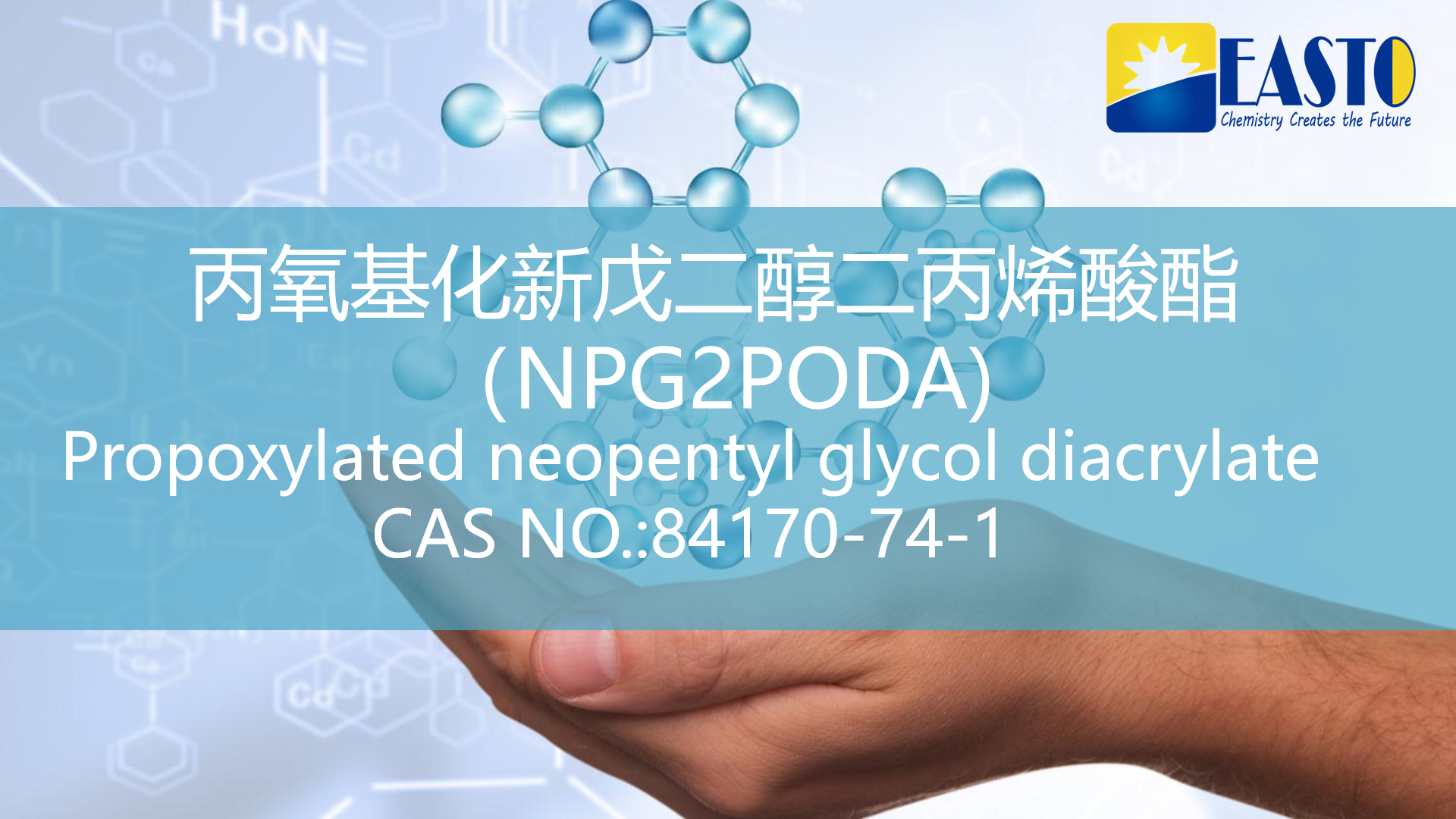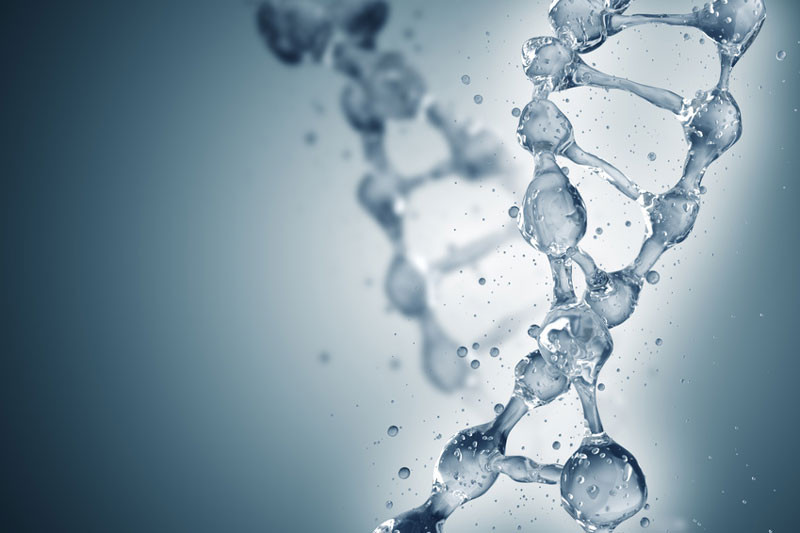DMAEMA: The "Smart" Monomer Powering Next-Generation Materials(Part 1)
Release time:
2025-05-20
Introduction: Unveiling DMAEMA's Potential
In the dynamic realm of materials science, certain chemical building blocks stand out for their exceptional versatility and transformative capabilities. Among these, 2-(N,N-Dimethylamino)ethyl methacrylate, commonly known as DMAEMA (CAS# 2867-47-2), has emerged as a particularly significant and adaptable monomer. This clear, colorless liquid serves as a fundamental component for crafting advanced materials due to its unique dual functionality, which imparts both high reactivity and remarkable versatility.
The importance of DMAEMA in modern materials science cannot be overstated. Its unparalleled adaptability allows it to be a key ingredient in established industrial sectors, such as high-performance coatings and water treatment, while simultaneously driving innovation in rapidly expanding high-tech domains like biomedical engineering and sophisticated smart materials. This broad impact, spanning both traditional, large-scale manufacturing and cutting-edge, precision-engineered applications, underscores DMAEMA's robust and enduring relevance. It is a chemical that consistently meets diverse market demands, demonstrating a remarkable capacity to adapt across various stages of material science development.
The Molecular Foundation: Structure and Intrinsic Properties
The remarkable utility of DMAEMA stems directly from its distinctive molecular architecture. The compound is uniquely characterized by the presence of two crucial functional groups: a methacrylate group and a tertiary amine group. The methacrylate group, represented by its SMILES notation CC(=C)C(=O)OCCN(C)C , provides the necessary reactivity for polymerization. This enables DMAEMA to readily form long polymer chains or intricate cross-linked networks, serving as the backbone for various polymeric materials.
Complementing the methacrylate functionality is the tertiary amine group, specifically the N,N-Dimethylaminoethyl moiety. This amine group acts as a chemical base, capable of neutralizing acids to form salts, a reaction that typically releases heat. Crucially, this tertiary amine group is directly responsible for DMAEMA's pH-responsive behavior and its ability to acquire a cationic (positive) charge in aqueous environments. As a weak cationic polyelectrolyte, the protonation state of its amine groups is highly sensitive to changes in pH. The apparent pKa of poly(DMAEMA) typically ranges from 7.7 to 8.1. Below this pH range, the amine groups become protonated, rendering the resulting polymer chain hydrophilic and positively charged. This protonation is fundamental to its solubility and its interactions with other charged species.7 The precise pKa range of DMAEMA is not merely a chemical detail; it strategically positions its pH-responsiveness around physiological pH, which is approximately 7.4 for normal tissues. This characteristic makes it exceptionally relevant for biomedical applications where subtle pH shifts, such as those found in tumor microenvironments (pH 6.2-6.9) or cellular endosomes (pH 5.0-6.0), can trigger significant changes in the material's charge, hydrophilicity, and conformation. This allows for highly targeted delivery and controlled release of therapeutic agents within biological systems.
DMAEMA typically presents as a clear, colorless liquid. Its molecular weight is 157.210 g/mol, with a molecular formula of C8H15NO2. Key physical parameters include a boiling point of approximately 187°C at 760 mmHg, a melting point of -50°C, and a density of around 0.9 g/cm³. While the pure monomer is often described as "less dense than water and insoluble in water" , it is also noted as "water-miscible" and soluble at 240 g/l "upon hydrolysis". More significantly, its polymeric forms (PDMAEMA) exhibit pH-dependent solubility, becoming highly soluble when protonated at lower pH values. This highlights that its solubility is a dynamic property, particularly in its polymeric or modified forms.
The stability of DMAEMA requires careful consideration. It is generally stable but incompatible with strong acids, bases, and strong oxidizing or reducing agents. It is sensitive to light, air, and moisture, which can lead to decomposition. A critical concern is its propensity to undergo autopolymerization or polymerize exothermically if heated or contaminated, posing a risk of violent container rupture. To mitigate this risk and ensure product integrity, DMAEMA is commonly stabilized with inhibitors, such as 4-methoxyphenol. The inherent instability of DMAEMA, particularly its tendency for uncontrolled polymerization and sensitivity to environmental factors, is a direct consequence of its high reactivity. While this reactivity necessitates meticulous handling, storage, and the use of stabilizers, it is precisely this high reactivity that makes it such a valuable and versatile monomer for controlled polymerization processes. This represents a fundamental trade-off between chemical reactivity and material stability, a challenge effectively managed through engineering solutions.
For a concise overview of DMAEMA's fundamental characteristics, refer to the table below:
Table 1: Key Physical Properties of 2-(N,N-Dimethylamino)ethyl methacrylate (DMAEMA)
Property | Value |
CAS Number | 2867-47-2 |
Molecular Formula | C8H15NO2 |
Molecular Weight | 157.210 g/mol |
Physical State | Clear, Colorless Liquid |
Boiling Point | 187.0 ± 0.0 °C (at 760 mmHg) |
Melting Point | -50 °C |
Density | 0.9 ± 0.1 g/cm³ |
Flash Point | 70.6 ± 0.0 °C |
pKa (of polymer) | 7.7-8.1 (approx.) |
Stability Notes | Prone to autopolymerization; sensitive to light, air, moisture; incompatible with strong acids/bases/oxidizers/reducers |
Beyond the Monomer: Properties of DMAEMA-Based Polymers
The true potential of DMAEMA is realized when it is polymerized, forming materials with dynamic and tunable properties. Poly(2-dimethylaminoethyl methacrylate) (PDMAEMA) stands as a prime example of a "smart" or stimuli-responsive polymer. It is capable of undergoing rapid and reversible conformational modifications in response to subtle changes in its environment, including pH, temperature, and ionic strength.
Stimuli-Responsiveness: pH and Temperature
The pH-responsiveness of PDMAEMA is a direct consequence of its tertiary amine groups. Below its pKa (7.7-8.1), these amine groups along the polymer chain become protonated, acquiring a positive charge. This protonation renders the entire PDMAEMA chain hydrophilic and water-soluble. Conversely, at pH values higher than its pKa, the DMA groups deprotonate, causing the polymer to become more hydrophobic and potentially leading to self-aggregation or phase separation.
In addition to pH sensitivity, PDMAEMA also exhibits a pH-dependent Lower Critical Solution Temperature (LCST) behavior in aqueous solutions. This means it transitions from a soluble, hydrated state to an insoluble, collapsed state upon heating above a specific "cloud point" temperature. The exact cloud point can be finely modulated by various factors, including the solution's pH and the presence of specific counterions. For instance, the introduction of hydrophobic anions can significantly decrease the cloud point and, in acidic conditions, can even trigger an Upper Critical Solution Temperature (UCST) behavior, where the polymer becomes soluble upon heating. This sophisticated interplay between pH and temperature responsiveness, further influenced by ionic strength and specific counterions, transforms PDMAEMA into a highly tunable material system. This multi-stimuli responsiveness is the fundamental basis for developing advanced applications that require precise and dynamic control over material behavior, such as targeted drug delivery or sophisticated sensing platforms. The ability to engineer a polymer that responds not just to a single stimulus, but to a complex combination of environmental cues, elevates PDMAEMA to a truly "smart" material.
Cationic Nature & Electrostatic Interactions
When protonated at lower pH, DMAEMA-based polymers acquire a significant positive charge. This cationic nature enables them to readily form strong electrostatic complexes with negatively charged biomacromolecules, such such as DNA and RNA. This direct cause-and-effect relationship between the protonated tertiary amine group and its ability to interact with negatively charged biological components is a fundamental principle underlying its utility in gene delivery and antimicrobial applications. The same inherent cationic property is also a key factor in its antimicrobial activity; the positively charged polymer can effectively disrupt the negatively charged bacterial membranes, leading to bactericidal effects.
Polymerization Versatility & Tunable Properties
DMAEMA is a highly reactive monomer that can undergo various polymerization methods, most commonly free-radical polymerization, to form homopolymers (e.g., poly(DMAEMA)) or copolymerize with a wide range of other monomers, including methyl methacrylate (MMA), n-butyl methacrylate, styrene, and N-Isopropylacrylamide (NIPAAM). Advanced polymerization techniques, such as Reversible Addition-Fragmentation Chain Transfer (RAFT) polymerization, offer exceptional control over polymer molecular weight, molecular weight distribution, composition, and complex architectures (e.g., block copolymers, star, and graft polymers). This capability to synthesize diverse polymer architectures signifies that the "smart" properties inherent in DMAEMA can be precisely engineered and strategically localized within a larger, multi-component material system.
Copolymers incorporating DMAEMA can be precisely designed as amphiphilic materials, possessing both hydrophobic and hydrophilic segments. These amphiphilic copolymers are recognized as crucial biomaterials due to their ability to self-assemble into well-defined structures like micelles or aggregates in aqueous solutions. The emphasis on copolymerization and advanced polymerization techniques like RAFT indicates a shift towards "designer polymers." RAFT, for instance, provides exquisite control over polymer architecture and molecular weight, which directly impacts crucial properties like self-assembly, stability, and responsiveness. For example, amphiphilic block copolymers can self-assemble into micelles capable of encapsulating and precisely releasing therapeutic agents in response to specific stimuli, a level of sophistication unattainable with simple homopolymers. This highlights the advanced material engineering capabilities unlocked by DMAEMA's versatile polymerization chemistry. The strategic incorporation of DMAEMA into polymer matrices significantly enhances various material properties, including adhesion, film-forming ability, chemical and weather resistance, and electrostatic characteristics.
DMAEMA
Latest News
Get a Free Consultancy
NANTONG EASTO MATERIALS TECHNOLOGY CO.,LTD.

No.118,Zhujiang Rd.,Juegang St.,Rudong County,
Nantong City,Jiangsu Province,226400,China




 2025-05-25
2025-05-25






